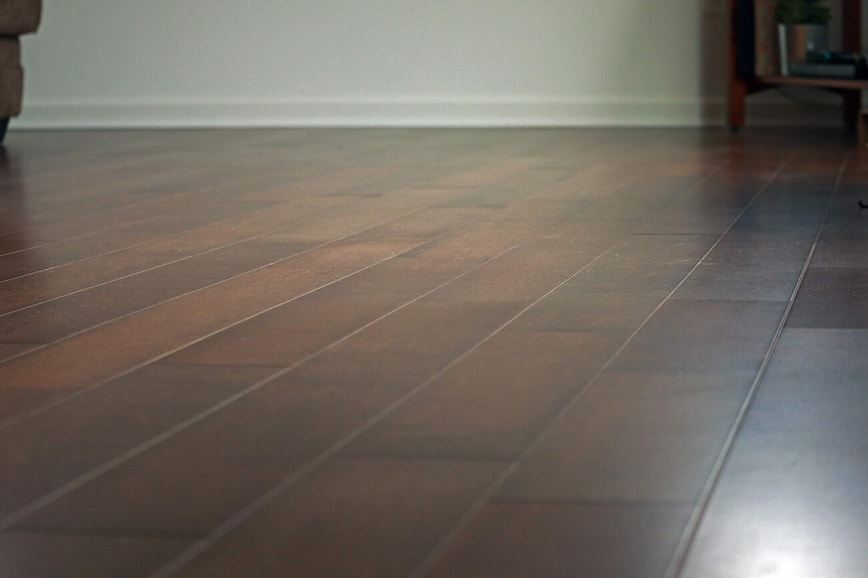Wood Flooring - Installation Considerations


Wood Flooring – Is It Right for Your Home?
Wood flooring is a traditional building material that can add beauty and character to your rooms. Compared to most flooring materials, it has a remarkably long life as it can be refinished repeatedly. Newer laminated veneers are dimensionally stable and attractive, but don’t offer the same refinishing benefits of traditional wood flooring, which generally comes in 5/8-3/4-inch thicknesses.
Wood Floor Benefits
Along with having a handsome appearance, wood is recyclable. Yes, it does require taking down timber to produce, but consider how many synthetic building materials are sitting in landfills after multiple renovations. A wood floor can last your lifetime if properly cared for. Also, you can buy recycled and even hand-scraped flooring if you want a recycled or farmhouse look. It will cost as much as newly dried and processed lumber, however.
Wood Floor Color Changes
Know that a wood floor will often change color over time with the finish type and sunlight being contributors. Generally, oil-based finishes will darken wood, and you will see less darkening with acrylic finishes. Oil-based urethane finishes are considerably more durable, however, and also bring out the variegation and beauty of the wood. They do yellow with age, however. Many flooring installers will only use acrylic-based coatings due to the fumes from the oil-based ones. Also, oils take much longer to dry (8 hours or so). Darker woods like cherry and walnut tend to darken regardless of the finish, unless they are stained or dyed, in which case, they will be more prone to fading. Oaks and hickory woods display less color change. This is something to ask your contractor about. No finish can completely stop wood from changing color, but UV-rated finishes will reduce the amount of light-induced color changes.
Wood Floor Options
Wood flooring comes in most species of wood, but the availability is limited by distributors, geographic location, etc. Bamboo, once an inexpensive wood, now costs more due to its popularity as an eco-friendly product. If being renewable is an issue, be sure to do your research because there are other determinants (in addition to species type and growth rate) that qualify something as eco-friendly. Don’t be too easily seduced by marketing.
Kiln-dried pine is an inexpensive wood option that can provide a rustic look but is extremely soft and prone to denting. Old, hard, yellow, southern pine, if you can find it in reclaimed form, is much harder than modern pine. Maple is a good hard wood if you like a light-colored wood and the cherry woods give a warm reddish glow to a room. Oak, red or white, is extremely hard and stable. When planning your floor renovation, be sure to ask for real samples so you can view them in your living area.
Prefinished or Finished Onsite?
Prefinished floors are faster to install because the finishing step is left out. Prefinished floors work best on new construction or in rooms that have perfectly flat floors or subfloors, as any imperfections will show through to the final floor or require a lot of fidgety work to llevel. Homeowners who are installing themselves might prefer this type because of the learning curve of using a floor belt-style sander. Prefinished floors are easier to install and don’t make a dusty mess, or a noxious-smelling environment (as in the case of using oil-based finishes).
There are arguments for using raw wood flooring with post-install finishing, however. One of them is that you have your choice of finishes. Many prefinished floors come with an acrylic polyurethane finish. If you want an oil-based polyurethane (more durable) or custom finish, or even a custom stain, you want to start with an unfinished floor. The other beauty to an unfinished floor is that, when sanded properly, it makes for a beautiful, continuous surface. If you should decide to stain your floor, know that this makes it harder to repair it should you get a scratch or other damage. In general, if you can find wood that is already the color you prefer, this means less work and more repairability up the road, depending on your finish type.
Oil finishes can more easily be sanded and repaired than acrylic-based finishes. Ask your contractor about this. Also, if you are wondering about the degree of gloss, the glossier finishes look beautiful and reflect light beautifully, and highlight the figure of the wood. Unfortunately, they also show imperfections more than a satin finish will. Ask your contractor about durability, as a glossier finish may actually be a harder finish.
Lastly, if you go with a prefinished floor, know that the ones with v-grooves do collect dirt, and you will need to consider your cleaning routine, should you choose this flooring type.
Wood Floor Installation Costs
The cost of wood floors varies greatly depending on the wood type you use. Prefinished floors will cost less as they won’t need to be finished. However, the flooring will likely cost more than many unfinished hardwoods. The condition of your existing floor will also impact the cost. Does your current flooring need to be removed? Do you need a subfloor installed? These will be part of your total cost but expect to pay between 7 and 12 dollars per foot as a baseline. Wood makes a beautiful statement in a room when installed properly. When choosing your floor material, consider the amount of traffic your room will get, whether you have dogs (yes, dog toenails do scratch finishes), and what kind of feel you are trying to create in the room. There are other options including linoleum, ceramic tile, vinyl flooring, carpeting, and a variety of engineered and laminated products. If you are looking for a wood floor installer, get free, no-obligation quotes on our website.
